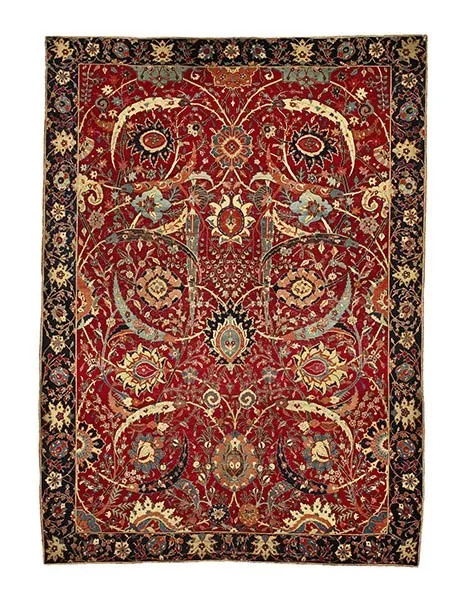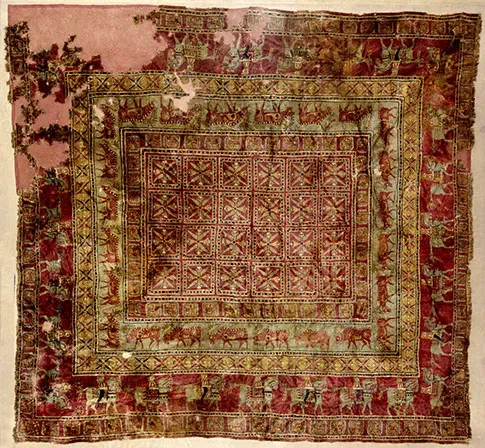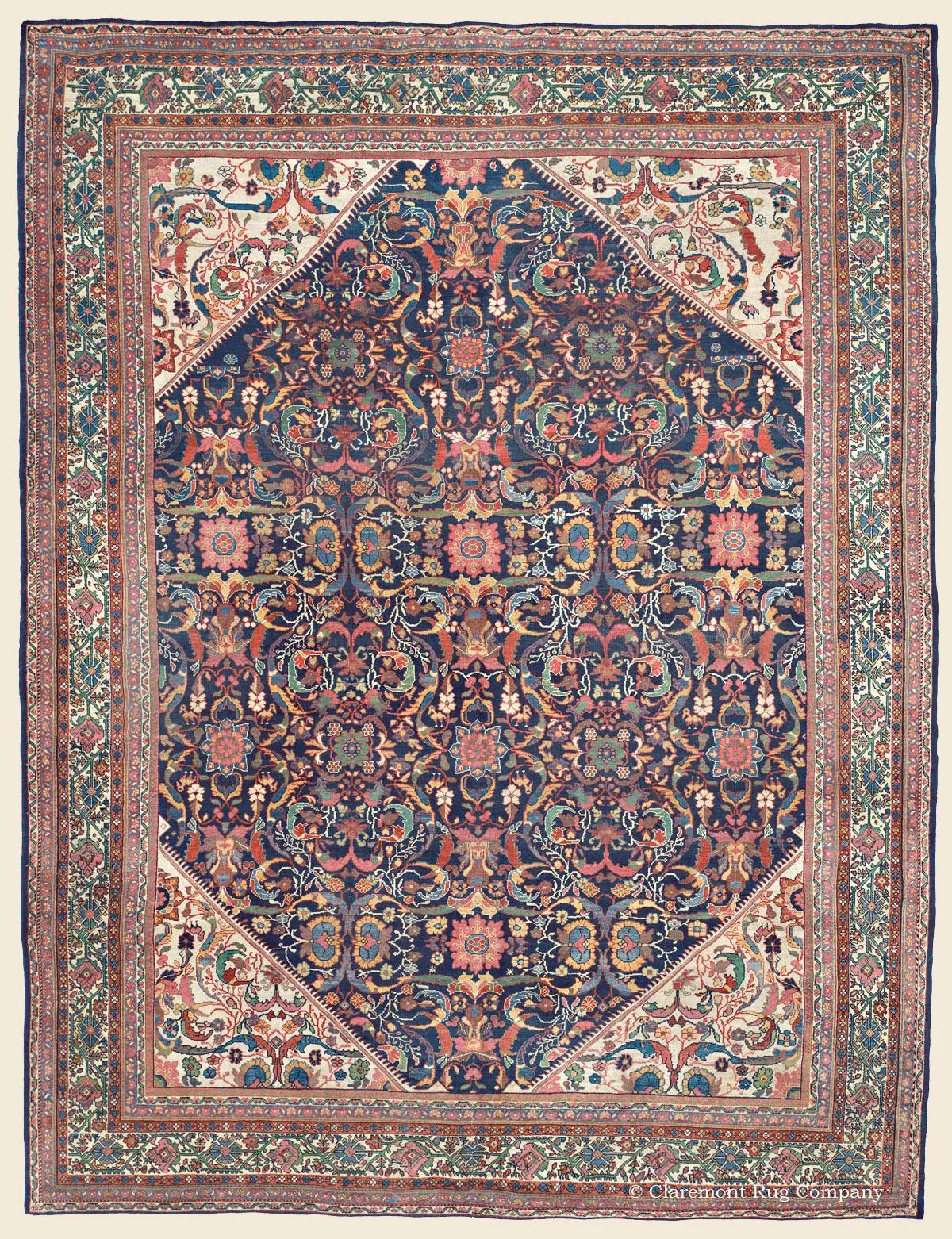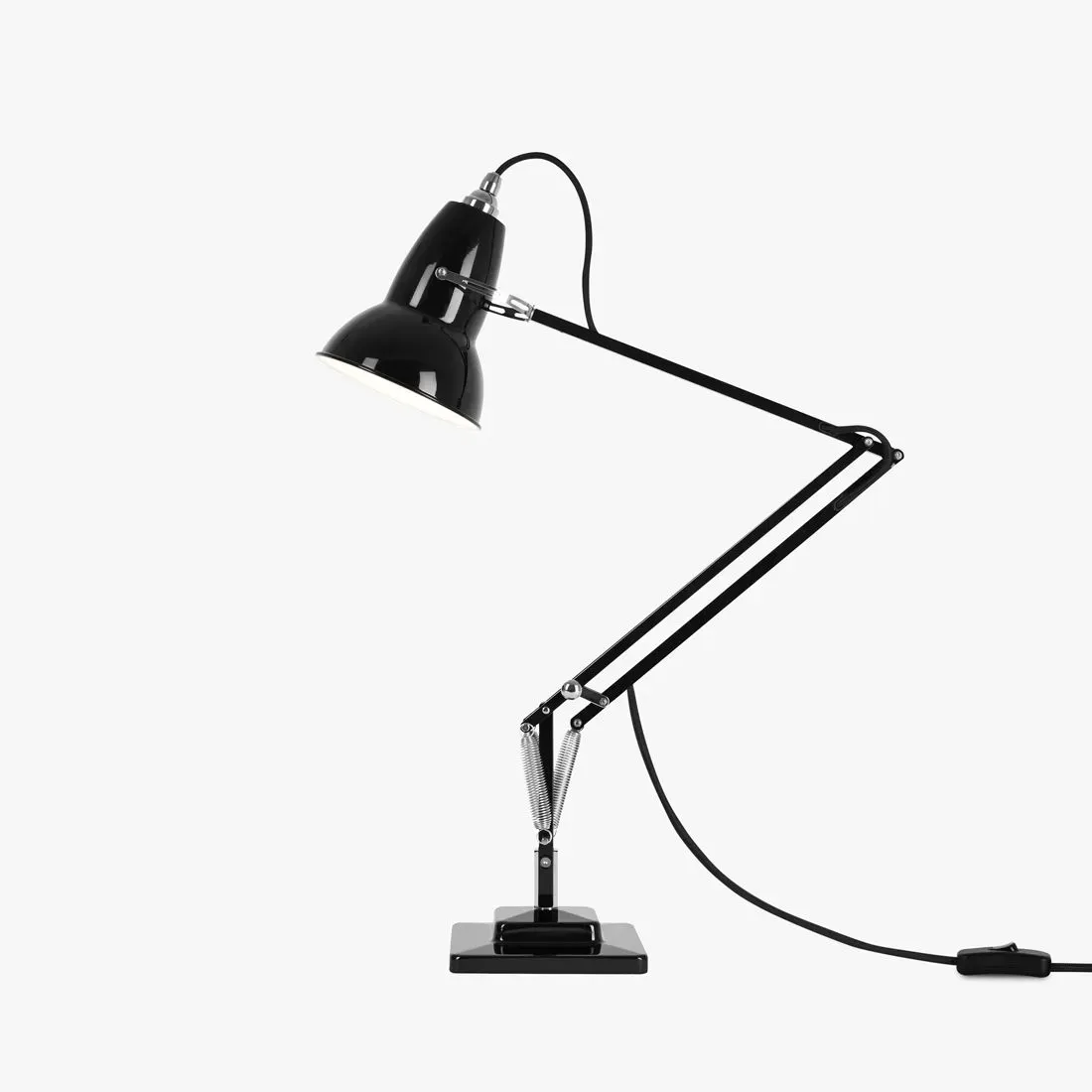A Short History of the Persian Carpet

James Broad
Aug 3, 2024 | 4 min read

The Persian carpet has a rich history which dates back over 2,500 years. They have been popular in homes for centuries and are considered by many to be the most exquisite of all rugs, so much so that the absolute stunner of a rug below sold for a whopping £33.75 million at Sotherby’s in 2013. I think we can all appreciate how much work goes into any of these rugs, especially the more intricate patterns but I can think of several other things to spend £33 million on!
So who were the daddies of carpet manufacturing?
Everyone has heard of a Persian carpet/rug right? The reason being, the Persians (Persia being the official name of modern day Iran until 1935) were the pioneer carpet weavers of the ancient civilisations. Other countries attempted to copy the skill of the Persians but as the art form was passed from generation to generation, the superior quality could not be rivalled by anything else produced at the time.

Let’s rewind 2,500 years….
It’s the year 486 B.C. Darius the Great, ruler of Persia, has just passed away to be replaced by Xerxes I. The Persians & Greeks are fighting yet another war. The Egyptians are revolting again. And somewhere in the midst of all of this, the Persians have somehow found the time to perfect the noble art of carpet weaving!
Fast forward to 1949 and a spectacularly old Persian rug is discovered in a grave of a nobleman in Kazakhstan which experts have managed to date back to the the reign of Darius the Great! The Pazyryk carpert, seen above, was preserved in ice and as such is almost perfectly intact.

Fit For A King
Initially, carpets were made for necessity — made to cover floors for Nomadic tribesmen, giving them protection from the cold and damp. As tribes travelled frequently, rugs were small in size, plain and basic in design, but incredibly durable and well made. As time wore on, the basic designs became highly detailed and exceptionally beautiful. Eventually as carpets became more & more popular, it came to be that the more intricate the designs, the higher up the social hierarchy one was considered to be as the patterns, colours, fabrics & sizes were indicators of wealth, money & power.
International Trade
In 1498, a new sea route was discovered by Vasco de Gama connecting Europe to the East; what followed was the colonisation of much of the Eastern world by the British, Dutch, French & Portuguese once trading posts had been established. Persia began trading with the West and one of their most coveted products was, of course, their spectacular rugs. The designs most sought after by the West were those vibrantly coloured with intricate designs of flowering gardens and bright bouquets used to brighten & warm up parlours, drawing rooms and boudoirs of every country and the demand for these exquisite carpets boomed in Europe.

The Victorians loved a Persian rug
Fast forward 370 years or so (we’ll skip over all the political tension, shipping issues and general nastiness of this period), and Persian rugs popularity sky rocketed. Persia saw a huge increase in investment by both local and foreign firms which spurred the development of a new Persian carpet industry. This was the start of Iran’s most important non-oil export.
Both America and Europe wanted bigger and more substantial rugs for their country homes, forcing Iran to change the sizing and designs of the rugs to suit the ever growing export market. Villages worked hard producing the rugs to meet demand, working long hours in harsh environments lit only by daylight. Often the skilled work was taken on by women or young children who were paid a very low wage, whilst the men took on the slightly easier role of dying the rugs and selling them on.
Foreign Investment
By the late 19th century companies across the UK invested heavily in the production, export and marketing of these sought after carpets. Designs were standardised to increase productivity and usually had wide main borders, narrow inner and outer borders and a rectangular central column which had a repeated pattern (typically a floral design) with rich colours in a range of different shades.
Foreign investment in the Persian carpet industry continued all the way into the 1930’s which saw a decline in foreign investment after a change in government, which bought the Persian textile export timeline to a close. Although the export ended, the desire to own a Persian carpet is still very much alive and the demand for Persian carpets its still high 500 years on from it’s initial introduction to the West. And still the craftsmanship, fabulous designs and eye catching colours cannot be rivalled. You will often see these rugs in both contemporary and antique interiors, as they are so versatile and easy to place.
So you now know a short history of the Persian carpet, look out for my next Persian carpet blog exploring how they are actually made and which different designs are from different regions.

